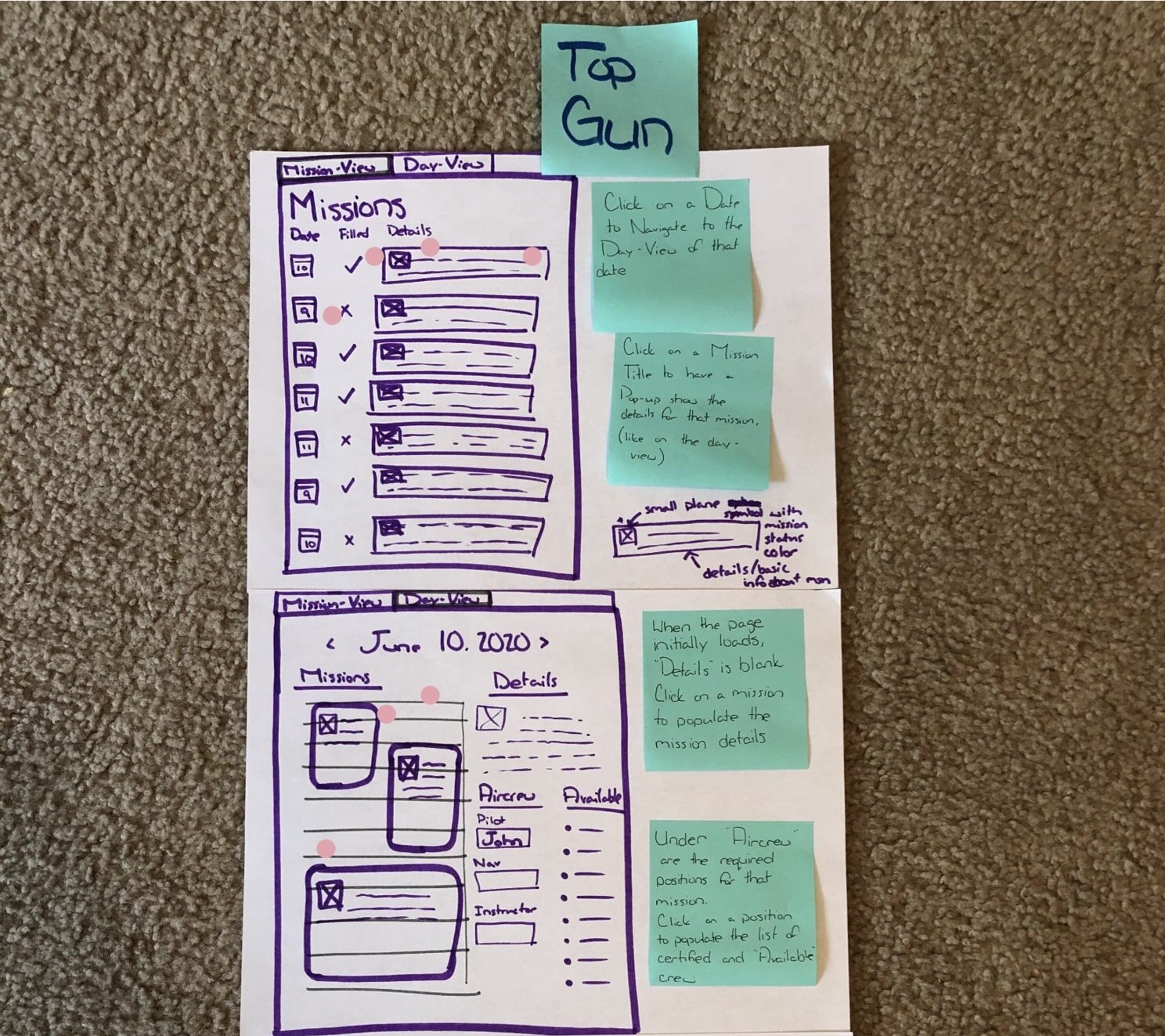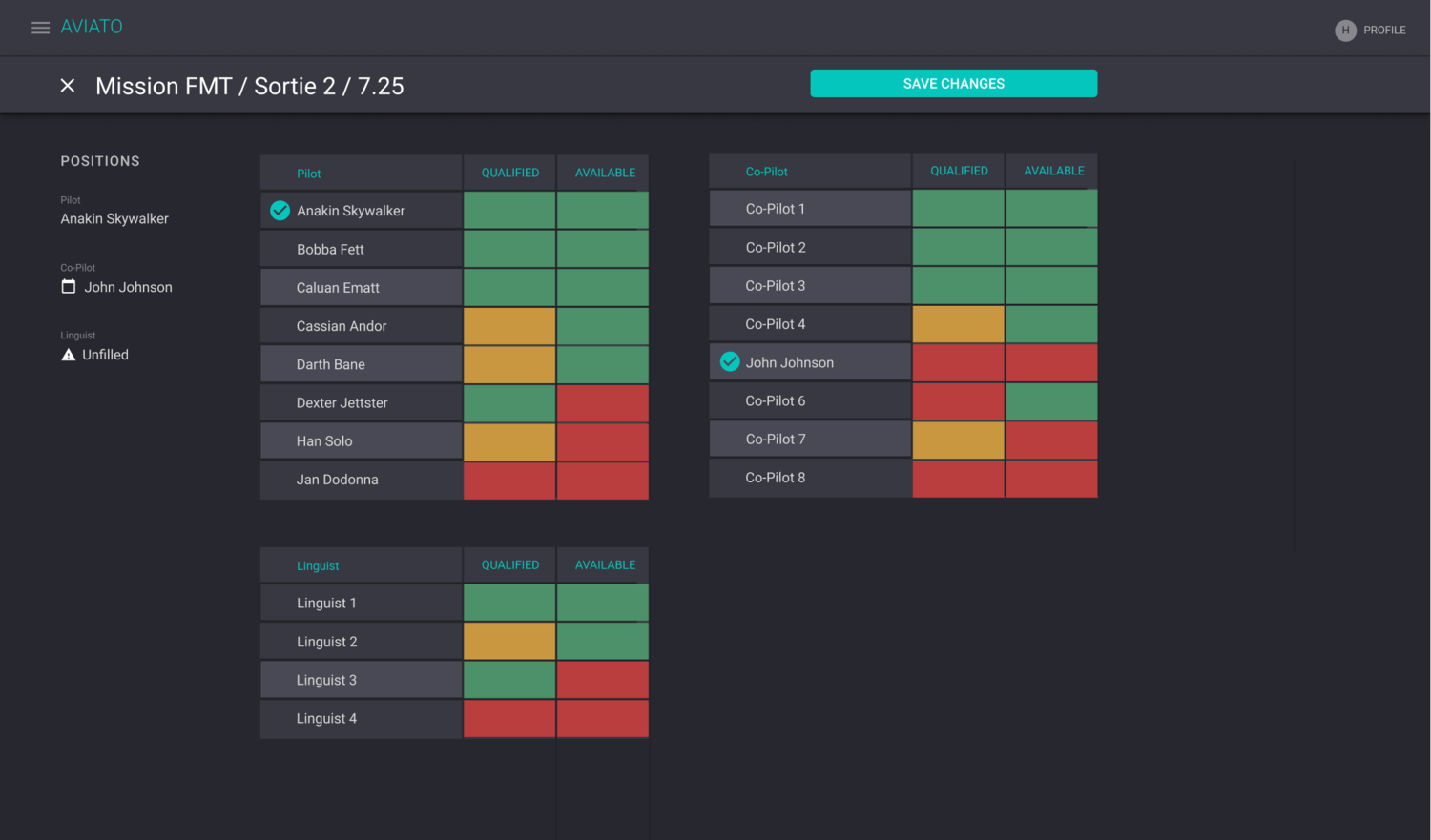Air Force /
Flight Scheduling

Modernizing Legacy Systems

The Problem
Scheduling personnel for training flights is one of the Air Force’s most tedious and difficult roles, cross-referencing numerous spreadsheets and papers to see who’s available, who’s qualified, and who needs training the most.
TIME
3 Months
MY ROLE
Product design
Strategy
Research

The Plan
Building off another product team’s extensive work in scheduling, our team was spun up to tackle the “personnel” side of things. Put another way, Team A had designed the ability to schedule flights on a day – now we needed to help them choose who was going to go on those flights.

Team
Myself as sole Product Designer, one Product Manager,
one Subject Matter Expert, four Developers
one Subject Matter Expert, four Developers

Process
Research
We were fortunate to inherit a wealth of knowledge and resources beyond the core user group. Because of this, I conducted initial research with users, our team’s Subject Matter Expert, and our main stakeholder. My focus was on their current workflow, mapping out each step, what pains there were, and opportunities for improvement. My tool of choice was the service blueprint.
- Service blueprint
Sprint Submissions
Testable Prototypes
Sprint Submissions



Testable Prototypes



As seen above, after a few days of “sprinting” we had a ton of awesome ideas. I ran user tests that we’d set-up in advance, and based on some feedback and technical considerations, ended up with the idea below:

Result
This concept is still being built out, but initial user tests have been hugely successful. We are currently projected for implementation in >20 Air Force Bases across the country by Fall 2021.




